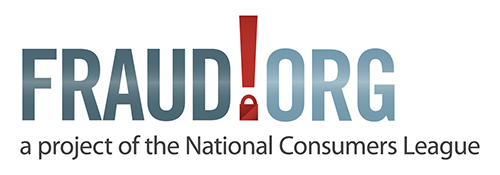Resolve to DM safely in 2022
Social media is more popular than ever, with nearly 3 billion users on Facebook, 1 billion on Instagram and TikTok, and nearly 400 million on Twitter. Given their enormous size, it was inevitable that these platforms would also become magnets for scammers looking to make a quick buck. In many ways, social media is the perfect way for fraudsters to find new victims since these digital platforms offer a number of ways to interact with victims — basic text, disappearing stories, live-stream videos, and countless more. This means that users must constantly stay alert as scammers could be seeking them out in many different ways.
In 2022, Fraud.org warns consumers to be especially wary of scammers seeking them out through these platforms’ direct messaging channels. Whether via Instagram direct messaging, Facebook Messenger, or Twitter “DMs,” scammers often seek to capture a victim’s sensitive information through these avenues because they allow private, one-on-one conversations. Phishing via direct messaging is troublesome as it places a lot of responsibility on the singular recipient to first, correctly determine if the sender is fraudulent and secondly, to accurately report the offending account. These factors can make it easier for scammers to avoid detection.
When compared to a public feed posting where multiple users (who may have knowledge of common scams) can view, react, share warnings, and report predatory posts, phishing via private messaging typically does not allow any other users to view the incoming message—let alone comment on or report the questionable DM. With only you, the recipient, being the first judge of character regarding a new message, it is important to keep in mind the following tips.
- Beware of users posing as government officials. Legitimate representatives of the state (whether local police or federal employees) should never ask for sensitive information over social media direct messaging. Anyone posing as a government agent who asks for payment, credit card numbers, Social Security numbers, or bank account details via DMs is just trying to scam you. If someone claiming to be with the government contacts you via a social media DM, the safest course of action is not to engage. If you’re concerned, contact the government agency independently to verify the validity of the sender.
- Watch out for hacked accounts. When receiving a suspicious message from an acquaintance, friend, or family member, it may be tempting to ignore the red flags. Unfortunately, even your closest loved ones’ accounts may be compromised. Once that happens, fraudsters can use those profiles to send out phishing messages. If the online account of someone you know is behaving strangely (for example: maybe your parent’s Facebook account is asking for your Social Security number or your close friend sent you a link over Twitter to claim a cash prize), reach out to the sender through other means—possibly in person or by phone—to verify if they truly sent those DMs.
- As a general rule of thumb, don’t use direct messaging on social media platforms to distribute sensitive information. By making this a habit, in addition to always questioning the authenticity of incoming messages, you can reduce your risk of fraud.
It’s important to remember that although not every individual who asks probing questions over the internet is a scammer, it is in your best interest to assume that they are fraudulent until proven otherwise. Even if the sender’s account belongs to someone you personally know, the danger of online communication is that you can never be fully certain of who is on the other side of the screen without secondary verification. Keep your community safe and be sure to report anyone that is distributing suspicious messages.
Be an ally in the fight against fraud!
If you suspect that you or someone you know has become a victim of one of these scams or any other fraud, don’t just delete the message — report it at once to the social media platform. You can file a complaint at Fraud.org via our online complaint form. We’ll share your complaint with our network of law enforcement and consumer protection agency partners who can investigate and help put fraudsters behind bars.









